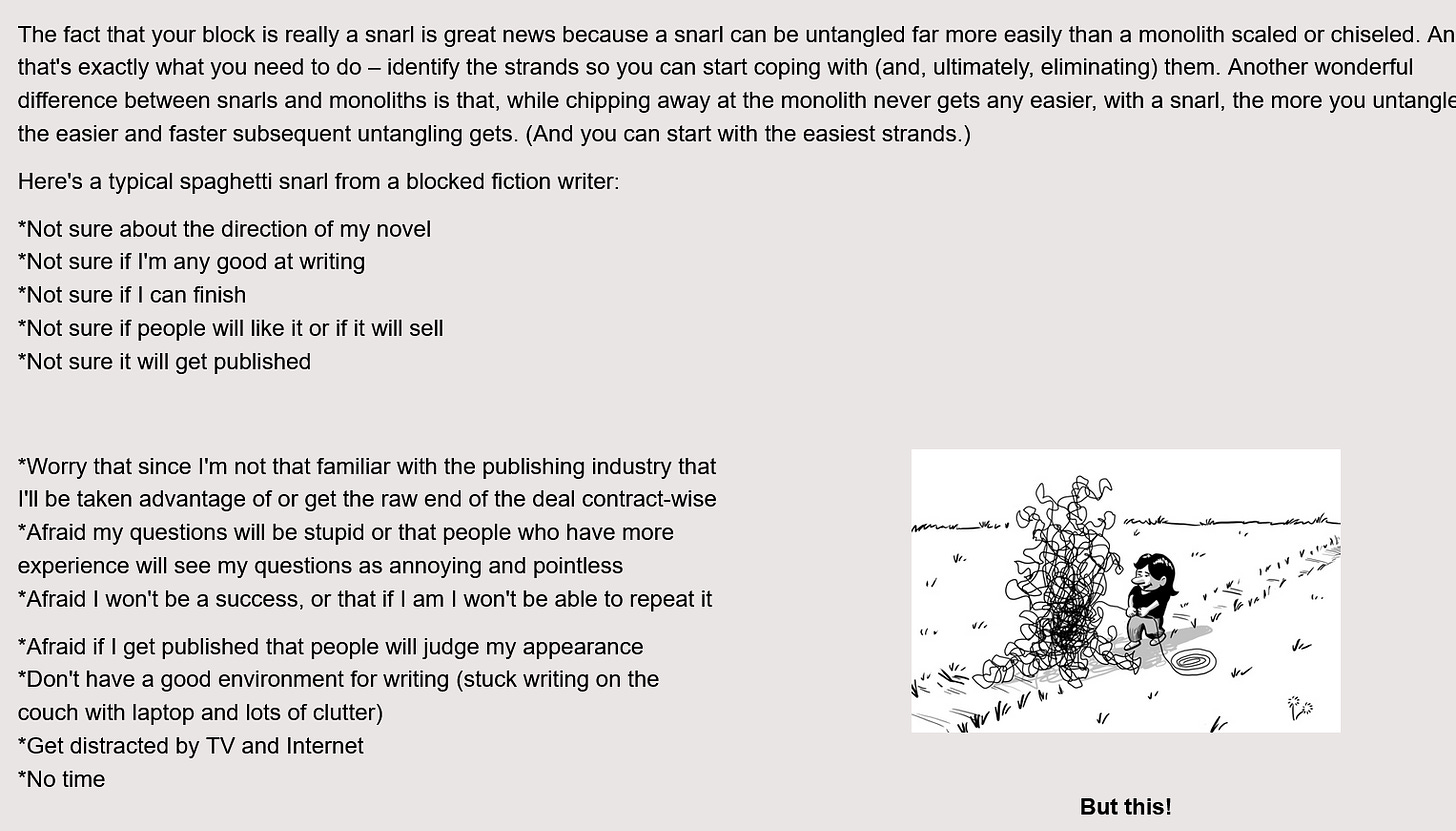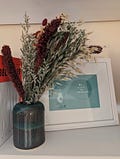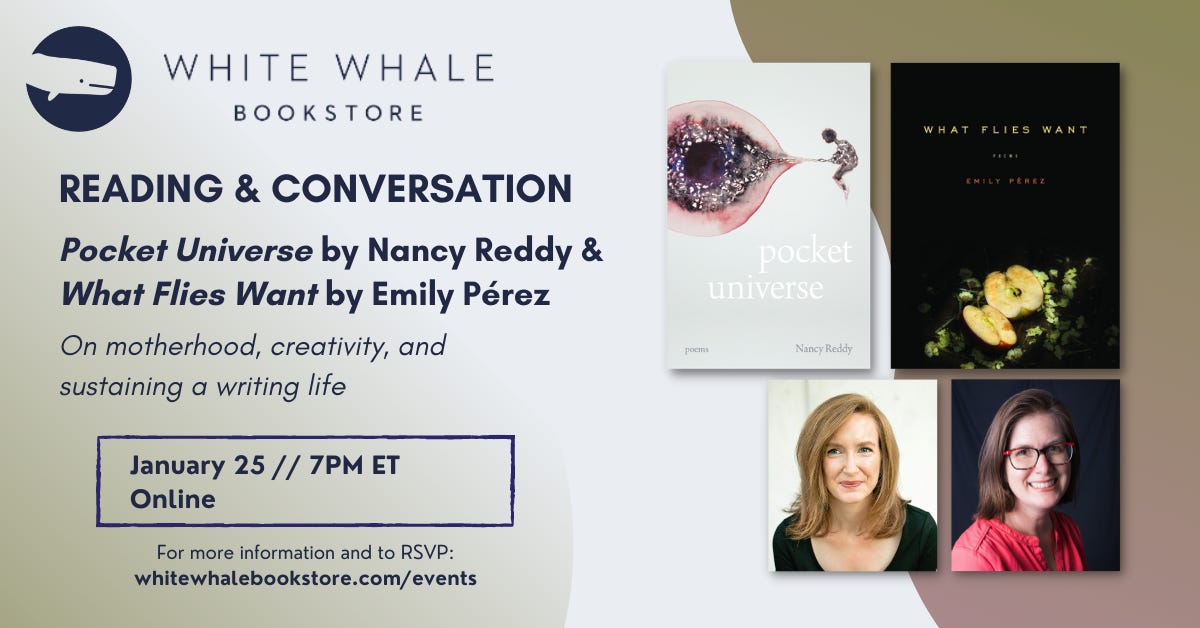let's make a list
January Jump Start #2: listing what and why (and maybe why not), with assists from Charles Duhigg and Keri Bertino
Happy New Year, and welcome to Write More! We’re trying something new for the new year—the January Jump Start. Every Sunday in January, you’ll get an email with a tip or strategy to help you set goals and track your progress. If you’re hoping to write more this year, it’s going to be a fun way to get started.
If you want to join us, subscribe here.
Hi friends! How is the new year treating you so far? I spent this whole last week feeling like my brain hadn’t quite arrived in 2023 just yet, so I’m going to count this Monday as another first day of the year. Feel free to join me in this wishful thinking if it help you harness that fresh start energy a little while longer.
We started last week with vision, and your assignment was to make a vision board. Lots of folks joined us for the vision board party on Thursday night! (It was such a joy to see lots of writers I know from real life, people I adore on the internet, and some new faces, too.) If you couldn’t join us, you can watch the recording here. (It’s just under 7 minutes—a quick bit where I talk about my vision boards and how I’ve put them together, then give some directions or guiding principles for making your own vision board.) You’ll hear shout-outs for Real Simple’s pretty graphics and Leigh Stein’s no-nonsense approach to writing, money, and ambition, which has been really important to me in the last several years. Even if you think you’re not a vision board person, maybe just try it out? Worst case, you’ll have a pretty, encouraging piece of art above your desk or on your dresser or wherever you’ve got a spot.

This week, we’re getting into the nitty-gritty of planning: what you’re planning for this year, and why it matters to you.
this week’s exercise: what and why
Make a big, messy list of everything writing-related that’s on your mind. This could be poems you want to write, articles you want to pitch, or an essay you’ve been revising. It might be one big thing—maybe you want this to be the year you finish your novel or start sending out your manuscript of poems. You can also include anything that’s writing-adjacent, like updating your website (ugh), applying to residencies, working on your platform, or pitching yourself as a podcast guest.
For each one of the things on your list, make a note about why you want to do it. In his great book Smarter Faster Better, Charles Duhigg describes why as a strategy for staying motivated when a goal is hard. When I’ve felt really stuck, I’ve often written that out at the top of notebook page or in my planner—what I’m working on and why it matters. And your why could be almost anything: you might be working on an essay because you have a story you want to share; you might want to write an article because you think it will be fun and (and/or, even!) earn you some money; you might want to pitch a dream publication because having an article there would change your professional life. Your why can be as practical or as deep as you like, and you probably have lots of different kinds of whys in your list.
And what if you’re realizing you uh . . . don’t want to do it? That’s another potential benefit of this exercise, though I’m not sure it’s one Duhigg would endorse. There have been times in my life when a lot of the things on my list would have been shoulds: I should work on an article because it’s what my grad school advisors would have expected; I should finish this essay because I’ve already sunk so much time into it; I should . . . (You can fill in the blanks with your own examples, right?) If there are things on your list that give you a little ache in the pit of your stomach—can you just cross them out?
In the earliest iteration of this project, when we were over at PANK as the Up Drafts, I talked to Jessica Abel, an illustrator and creativity coach, and one thing she said has really stuck with me: what if you quit? I’m not saying you should give up on everything that’s hard, but there can be real freedom in quitting the things that don’t serve you and making space for the things that really matter. So if there’s anything on your list that’s only there because you think it should be, cross it right out.
Okay, but . . . maybe some of those things you don’t want to do are things you kinda need to do? Or maybe you’re just feeling stuck in a couple spots. Here, we can invoke something I learned from Keri Bertino, in her great workshop Writing for Fuck Ups: instead of picturing your trouble as a block or a wall, think about it as a snarl. It’s not unsurmountable. You don’t need to scale it or demolish it; you just need to untangle it a bit.

from Hillary Rettig’s book, The Seven Secrets of the Prolific Where are you getting stuck? Is it a problem of knowledge? motivation? time? support? If you have an essay you’ve been chipping away at but can’t seem to finish, maybe you need some support—a friend who will read it and tell you what they see in it and how you might develop it further. You might actually need to learn something to move forward—how to write a query letter, what magazines you want to pitch, and so on. And if there are tasks that are important but a little boring, you might enlist some friends to make it fun. My friend Cynthia used to host sip and submit parties where we’d all spend a morning drinking coffee and sending out poems. Even tedious writing tasks are better with friends. You don’t need to solve those problems right now; just make yourself a note about why you’re think you’re stuck and what you might need to get unstuck.
And finally: check your list against your vision. Which items on your list are most closely aligned to your vision for the year? Which of the projects on your list will take you where you want to go? And remember, if you’re feeling overwhelmed, you can always just do one small thing.
upcoming events (on the internet and in 3D, in Texas!)
The Long Devotion at a Hundred Pitchers of Honey (online), Th, January 19th, 7.30 pm eastern
We’re so excited to have contributors to The Long Devotion: Poets Writing Motherhood on Donna Vorreyer’s great online reading series, A Hundred Pitchers of Honey. Our readers include Sunu Chandy, Emari DiGiorgio, January Gill O’Neil, Clarissa Mendiola, Joyelle McSweeney, and Lena Khalaf Tuffaha. You can register at this link.
Reading & Conversation with Emily Pérez at White Whale Bookstore (online), W, January 25th, 7pm eastern
Emily and I were so excited about our anthology coming out in 2022—but did you know we both published our own second books last year, too? On Wednesday, January 25 at 7pm eastern, we’re having a reading and conversation online hosted by White Whale Books (a gorgeous bookstore in the city of my heart). We’ll each read a couple poems from our new books and talk about the balance of mothering, work, and writing. If you’re someone who’s working to create a sustainable creative practice alongside all the other wonderful, overwhelming parts of your life, I think you’ll really love it. You can find a facebook invite for the event here (invite a few friends, while you’re at it!) or go right to the EventBrite link here.
The Long Devotion goes to Texas!
Emily and I both have Texas connections, and The Long Devotion has a ton of amazing Texas contributors, so we are really thrilled to be taking our little show on the road! We’ll be in Houston Friday, February 24th for a reading at Basket Books in midtown, and we’ll be in Austin on Saturday, February 25th for a reading at the Crashbox Theater. More info and snazzy graphics to come! If you’re in Houston or Austin, I’d be so thrilled to see you there!

I hope you have a great week! I’ll see you back next Sunday, when we’ll start to talk about counting and tracking.
Write More, Be Less Careful is a newsletter about why writing is hard & how to do it anyway. I’d love to hear from you. Reply to this email, comment below, or find me on twitter (@nancy_reddy) and instagram (@nancy.o.reddy).
If you’ve enjoyed this newsletter, I’d love it if you would share it or send it to a friend.






“Sip and submit” - I love that!!